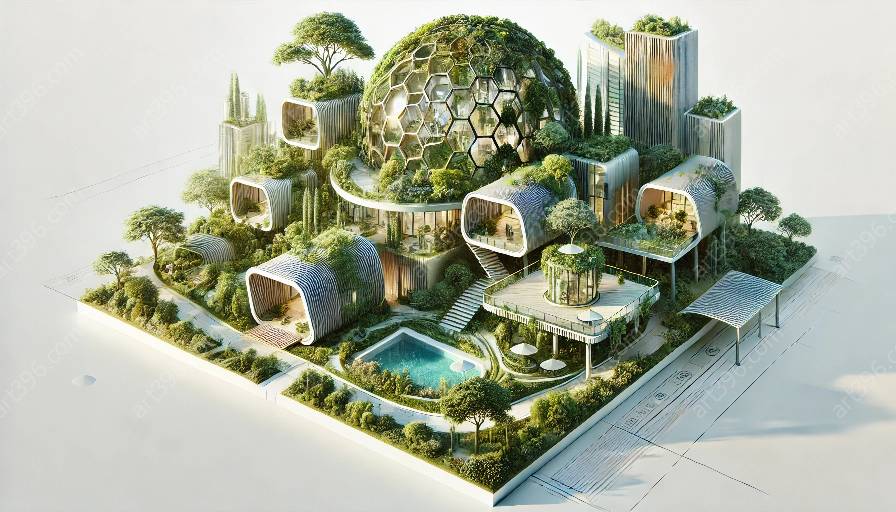Sustainable architecture, also known as green architecture, has been reshaping the way we design and construct buildings to minimize environmental impact and promote a healthier planet. One emerging trend within sustainable architecture is biomimicry, a design approach that draws inspiration from nature to create innovative and eco-friendly structures.
Understanding Biomimicry
Biomimicry, derived from the Greek words 'bios' (life) and 'mimesis' (to imitate), is the practice of emulating nature's designs, processes, and systems to solve human challenges. Architects and engineers are increasingly turning to nature as a source of inspiration for sustainable building solutions, recognizing that billions of years of natural selection have resulted in highly efficient and adaptable designs and systems.
Nature-Inspired Design Principles
One of the fundamental principles of biomimicry in sustainable architecture is the application of nature's strategies and forms to improve the performance and sustainability of built environments. By observing and studying the biological processes and structures of plants, animals, and ecosystems, architects can gain valuable insights that inform the design of energy-efficient, resilient, and resource-conserving buildings.
- Form and Function: Biomimetic architecture seeks to mimic the form, structure, and functions found in nature. For example, the honeycomb structure of beehives has inspired the design of lightweight and strong building materials.
- Adaptation and Resilience: Nature's ability to adapt to changing environmental conditions has led to the development of resilient building designs that respond to climate change and natural disasters.
- Energy Efficiency: Learning from natural systems, such as the efficient use of resources in ecosystems, has driven the development of energy-efficient building designs that minimize environmental impact.
Examples of Biomimetic Designs
Biomimicry has led to groundbreaking architectural innovations that integrate nature's principles into sustainable building practices.
- Bio-Inspired Facades: Building facades inspired by the responsive behavior of plant surfaces have been developed to enhance natural ventilation, daylight harvesting, and thermal regulation within buildings.
- Biomorphic Structures: Organic and fluid architectural forms inspired by natural shapes and patterns have been implemented to create visually compelling and sustainable structures.
- Self-Healing Materials: Drawing inspiration from the regenerative abilities of living organisms, self-healing materials that repair cracks and damages in building components have been engineered, prolonging the lifespan of structures.
The Future of Biomimetic Architecture
The integration of biomimicry into sustainable architecture represents a paradigm shift in the way we conceptualize and design the built environment. As the awareness of environmental challenges continues to grow, biomimetic designs offer a promising pathway towards creating sustainable, resilient, and aesthetically pleasing structures that harmonize with the natural world. By partnering with nature through biomimicry, architects have the opportunity to pioneer a new era of green architecture that honors the wisdom of natural systems while meeting the evolving needs of human society.





























































